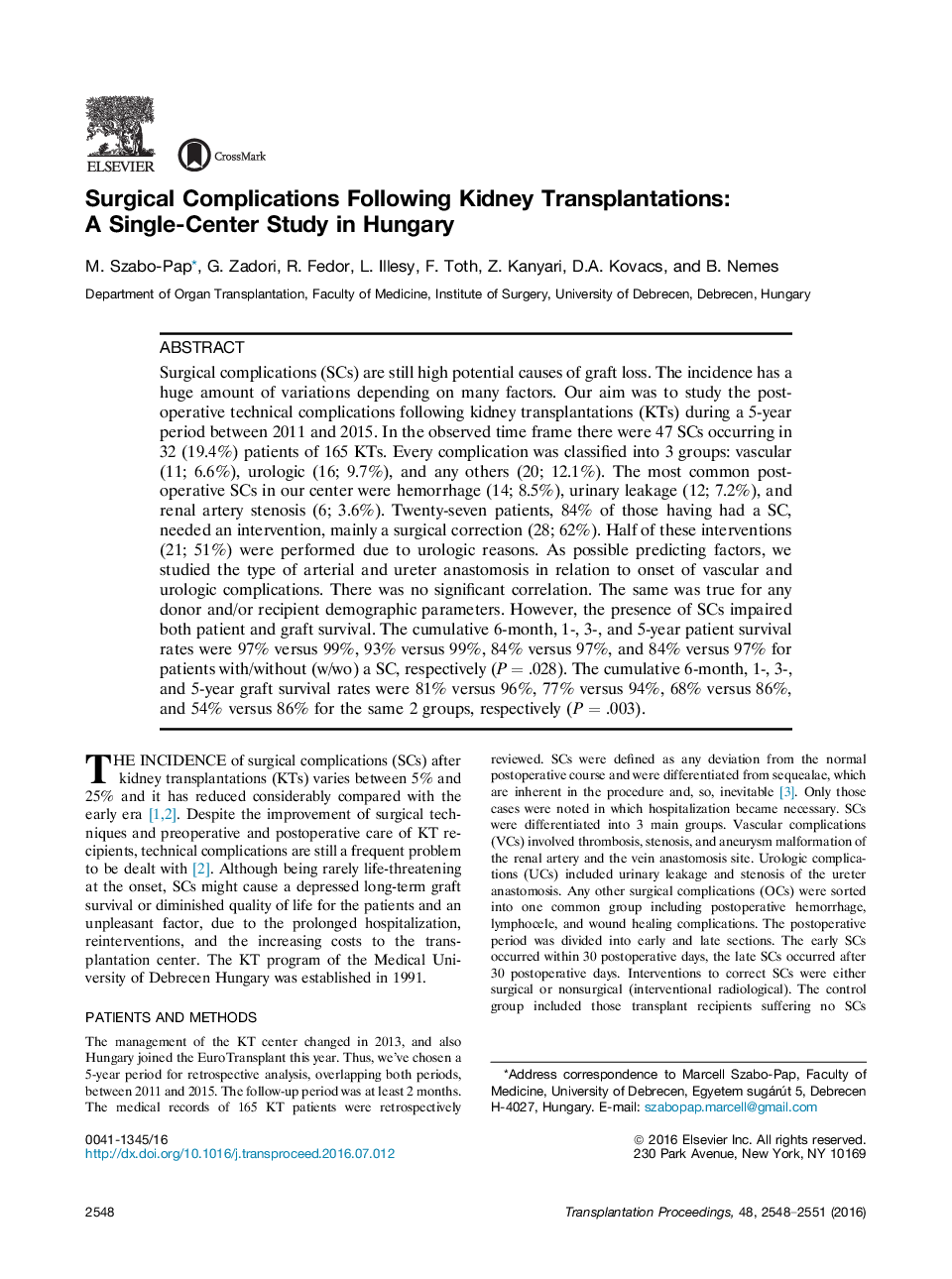| Article ID | Journal | Published Year | Pages | File Type |
|---|---|---|---|---|
| 5729414 | Transplantation Proceedings | 2016 | 4 Pages |
Surgical complications (SCs) are still high potential causes of graft loss. The incidence has a huge amount of variations depending on many factors. Our aim was to study the postoperative technical complications following kidney transplantations (KTs) during a 5-year period between 2011 and 2015. In the observed time frame there were 47 SCs occurring in 32 (19.4%) patients of 165 KTs. Every complication was classified into 3 groups: vascular (11; 6.6%), urologic (16; 9.7%), and any others (20; 12.1%). The most common postoperative SCs in our center were hemorrhage (14; 8.5%), urinary leakage (12; 7.2%), and renal artery stenosis (6; 3.6%). Twenty-seven patients, 84% of those having had a SC, needed an intervention, mainly a surgical correction (28; 62%). Half of these interventions (21; 51%) were performed due to urologic reasons. As possible predicting factors, we studied the type of arterial and ureter anastomosis in relation to onset of vascular and urologic complications. There was no significant correlation. The same was true for any donor and/or recipient demographic parameters. However, the presence of SCs impaired both patient and graft survival. The cumulative 6-month, 1-, 3-, and 5-year patient survival rates were 97% versus 99%, 93% versus 99%, 84% versus 97%, and 84% versus 97% for patients with/without (w/wo) a SC, respectively (PÂ = .028). The cumulative 6-month, 1-, 3-, and 5-year graft survival rates were 81% versus 96%, 77% versus 94%, 68% versus 86%, and 54% versus 86% for the same 2 groups, respectively (PÂ = .003).
